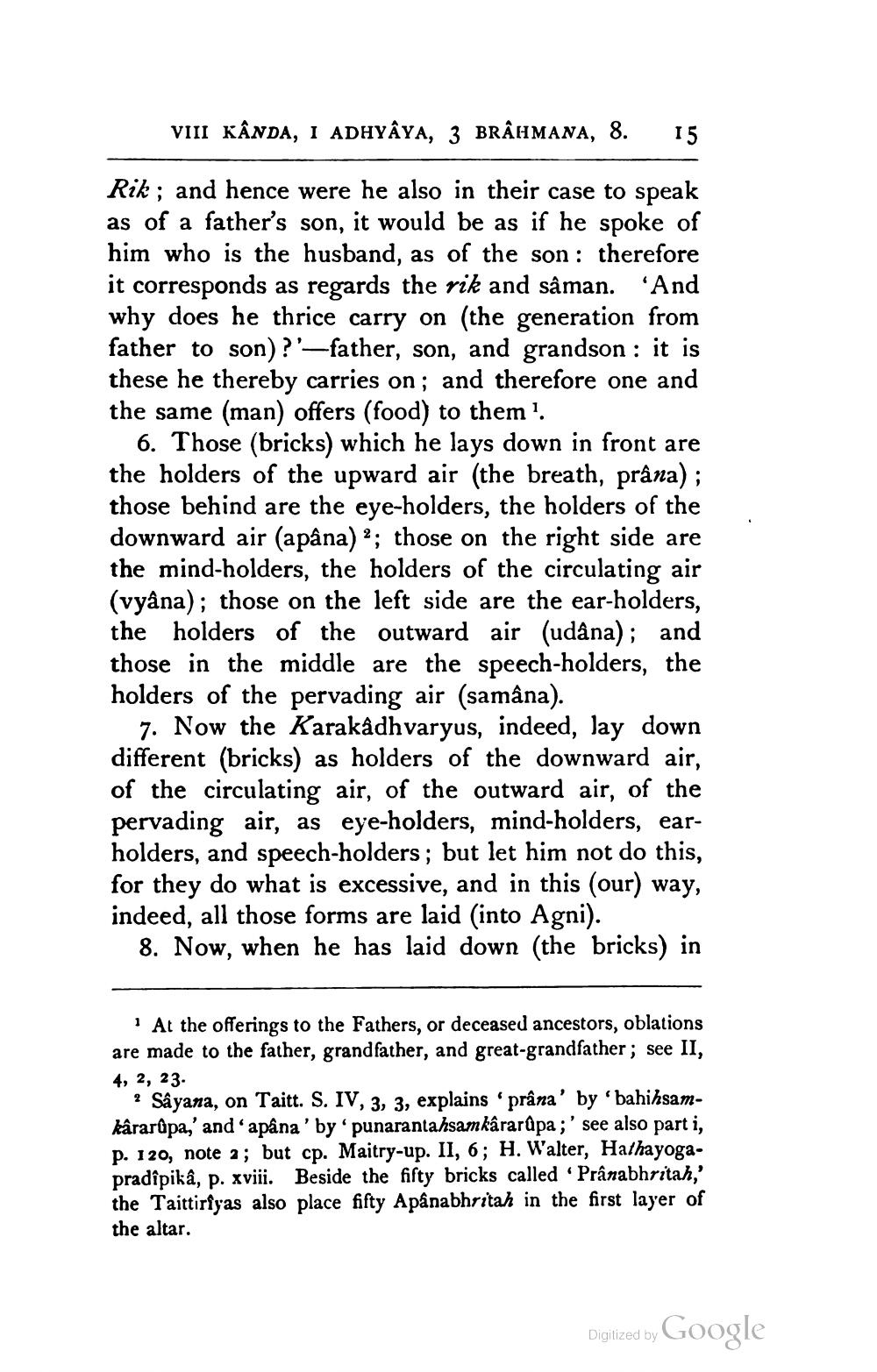________________
VIII KÂNDA, I ADHYÂYA, 3 BRÂHMANA, 8.
15
Rik; and hence were he also in their case to speak as of a father's son, it would be as if he spoke of him who is the husband, as of the son: therefore it corresponds as regards the rik and sâman. 'And why does he thrice carry on the generation from father to son) ?'-father, son, and grandson : it is these he thereby carries on; and therefore one and the same (man) offers (food) to them.
6. Those (bricks) which he lays down in front are the holders of the upward air (the breath, prâna); those behind are the eye-holders, the holders of the downward air (apâna) 2; those on the right side are the mind-holders, the holders of the circulating air (vyâna); those on the left side are the ear-holders, the holders of the outward air (udâna); and those in the middle are the speech-holders, the holders of the pervading air (samâna).
7. Now the Karakâdhvaryus, indeed, lay down different (bricks) as holders of the downward air, of the circulating air, of the outward air, of the pervading air, as eye-holders, mind-holders, earholders, and speech-holders; but let him not do this, for they do what is excessive, and in this (our) way, indeed, all those forms are laid (into Agni).
8. Now, when he has laid down (the bricks) in
At the offerings to the Fathers, or deceased ancestors, oblations are made to the father, grandfather, and great-grandfather; see II, 4, 2, 23.
? Sâyana, on Taitt. S. IV, 3, 3, explains 'prâna' by 'bahihsamkârarapa,' and apâna' by 'punarantahsamkârarûpa ;' see also parti, P. 120, note 2; but cp. Maitry-up. II, 6; H. Walter, Hathayogapradipika, p. xviii. Beside the fifty bricks called Prânabhritah,' the Taittirfyas also place fifty Apânabhritah in the first layer of the altar.
Digitized by Google




